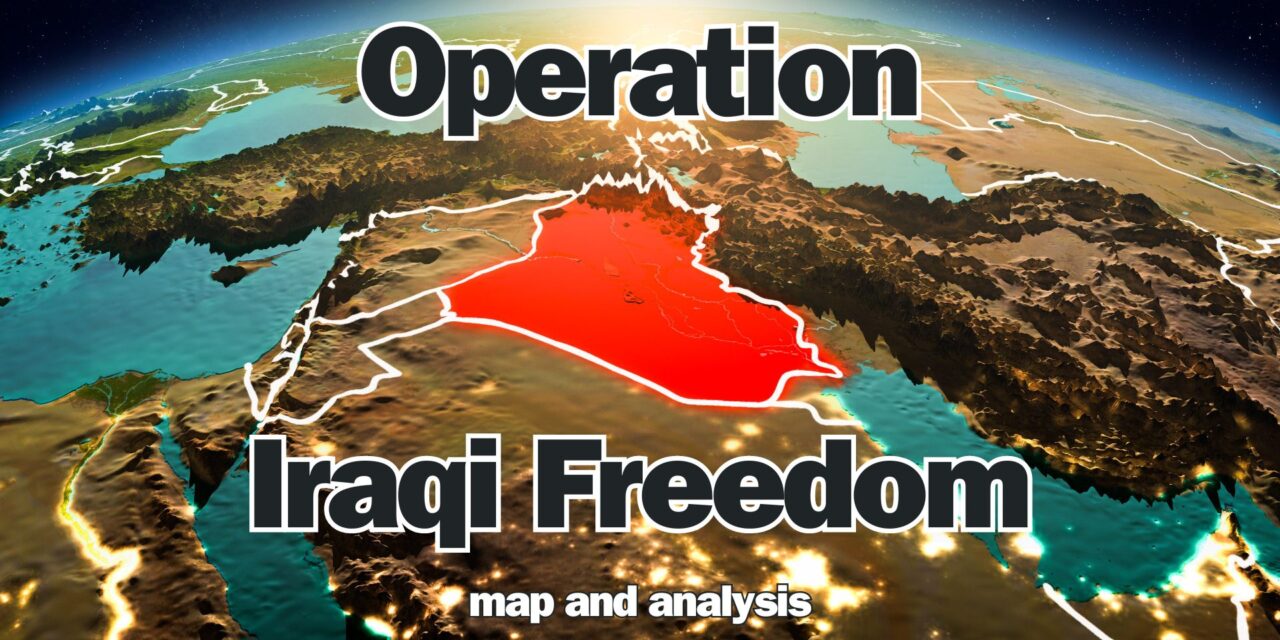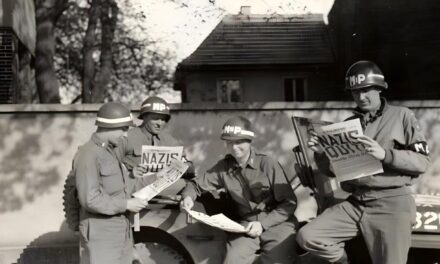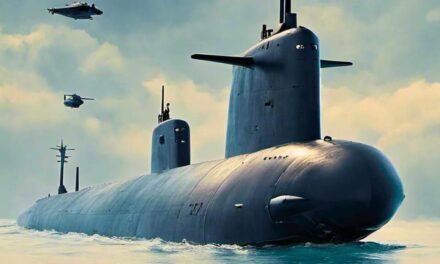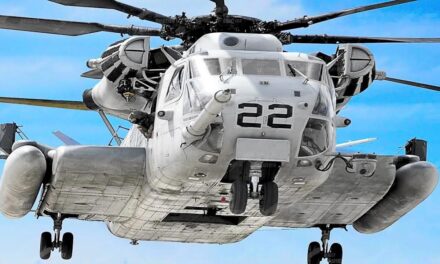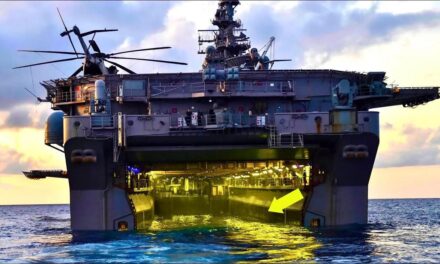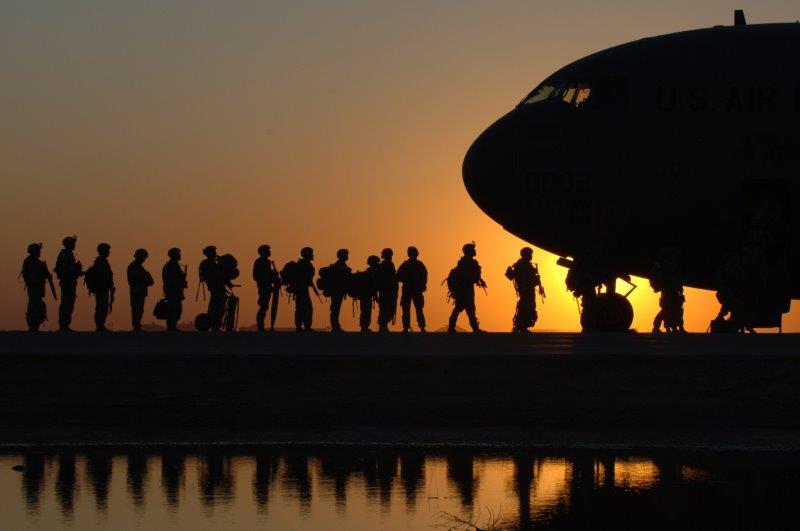The Operation Iraqi Freedom Map details the geography and major cities involved in Operation Iraqi Freedom, a lengthy military campaign initiated by the United States and several coalition partners in March 2003 to overthrow Iraqi dictator Saddam Hussein. The operation involved multiple phases over nearly a decade, including an initial invasion and occupation followed by an extended insurgency and eventual withdrawal of coalition troops in 2011.
Understanding the major events and battles that comprised Operation Iraqi Freedom provides important historical context around one of the most significant US military operations in recent decades. This article will walk through the key components of the Iraq War, from the early Gulf War in the 1990s to the eventual rise of ISIS after the coalition withdrawal, to provide a comprehensive look at this pivotal 21st century conflict.
The Operation Iraqi Freedom Map shows the major cities like Baghdad that were central to the invasion and occupation. It also depicts areas of insurgent activity during the post-invasion period. Referring to the map helps follow the progression of battles across Iraq over the lengthy campaign. With the context provided by the Operation Iraqi Freedom Map, we can better understand the complex military operation that was launched to topple Saddam Hussein's regime.
Key Takeaways
- The map of the Iraq War is a powerful tool for understanding the conflict's complexity, revealing the strategic military operations, the struggle for territorial control, and the significant historical events that have shaped the course of the war.
- Operation Iraqi Freedom was initiated in 2003 based on accusations that Iraq possessed weapons of mass destruction and had ties to terrorism. The intent was to overthrow Saddam Hussein.
- The initial invasion led by US and coalition forces quickly toppled the Iraqi government and military. However, occupying forces then faced a potent insurgency.
- Even after Saddam Hussein was captured and a new Iraqi government established, fighting continued for years between coalition troops, insurgents, and sectarian militias.
- The US completed its troop withdrawal in 2011, but the power vacuum contributed to the eventual rise of ISIS and further instability in the region.
Understanding the War in Iraq through the Lens of the Map
The map of the Iraq War encapsulates the intricate dynamics of the conflict, providing a visual narrative of military strategies, territorial disputes, and the ebb and flow of combat. It serves as a historical document, charting the coalition's advances, the locations of pivotal battles, and the persistent zones of insurgency. The map's detailed legend and color-coded symbols offer clarity, allowing readers to navigate through the complexities of military operations and understand the significance of each marked area.
- Strategic Military Operations: The map's depiction of operations like Arrowhead Ripper and Black Eagle underscores a deliberate approach to securing key regions and quelling insurgent activity.
- Territorial Control: The clear demarcation of the Sunni Triangle and Iraqi Kurdistan illustrates the divided control over Iraq's landscape, highlighting ethnic and political complexities.
- Insurgent Activity: Marked insurgent attacks reveal the ongoing resistance coalition forces encountered, emphasizing the difficulty in establishing lasting security and stability.
- Logistical Efforts: The main axes of advance and lines of communication are critical to the map, showcasing the logistical backbone essential for military operations.
- Historical Milestones: The Fall of Baghdad, marked on the map, represents a pivotal moment in the war, signaling a shift in power and the beginning of a new chapter in Iraq's history.

| Symbol | Description | Significance |
|---|---|---|
| Rectangle with "SF" | Special Forces | Indicates the presence and operations of elite Special Forces units. |
| Rectangle with "JSOTF" | Joint Special Operations Task Force | Denotes the operations of a combined, multi-service special operations unit. |
| Rectangle with "MEF" | Marine Expeditionary Force | Marks a significant deployment of U.S. Marine Corps forces. |
| Rectangle with "V" | Corps-Level Command | Represents a corps-level headquarters or high-level command post. |
| Rectangle with X's (inside) | Major Battle | Marks the location of significant military engagements or battles. |
| Rectangle with X (outside) | Brigade-Level Unit | Signifies a brigade-sized military unit. |
| Rectangle with XX (outside) | Division-Level Unit | Indicates a division-sized military unit. |
| Rectangle with XXX (outside) | Corps-Level Unit | Represents a corps-sized military unit. |
The Lead Up to War - Iraq's Invasion of Kuwait
Iraq invaded and occupied neighboring Kuwait in August 1990 under dictator Saddam Hussein, sparking international condemnation. In response, the United States spearheaded efforts to build a coalition response known as Operation Desert Shield. This coalition of forces, which grew to include 34 nations, conducted a massive military buildup over several months to prepare for action against Iraq's aggression.

Operation Desert Shield - The Coalition Build Up
Operation Desert Shield established a major troop presence in Saudi Arabia and the surrounding region as part of a deterrent force against Iraq. At its peak, the coalition assembled for Desert Shield included over 500,000 personnel, several thousand tanks and aircraft, and dozens of naval vessels. This marked one of the largest military buildups since the Vietnam War. The coalition also imposed economic sanctions and trade restrictions on Iraq. However, Saddam refused to withdraw from Kuwait, believing the coalition would not actually invade. This miscalculation would prove disastrous.
The First Gulf War - Liberating Kuwait
After over 5 months of buildup and failed diplomacy, the US-led coalition launched Operation Desert Storm on January 17, 1991. This marked the start of overt combat operations, aimed at expelling Iraqi forces from Kuwait. The resulting war would last just over 6 weeks but involved intense bombardment and would help reshape global perceptions of US military power.
Predominantly an Air Campaign
Operation Desert Storm commenced with a massive aerial assault on strategic Iraqi targets, with coalition aircraft pounding command centers, air defenses, military installations, and infrastructure. At the time, it represented the most intensive air campaign since the Vietnam War. Over the course of 5 weeks, coalition aircraft flew over 110,000 sorties and dropped 88,500 tons of bombs. This inflicted tremendous damage on Iraq's military capabilities.
"My private conviction is that this is the first time in history that a field army has been defeated by airpower" - US Air Force Chief of Staff Merrill McPeak
The 100 Hour Ground War
After weeks of unrelenting air strikes, coalition ground forces launched their offensive on February 24th. The bombing had devastated Iraq's military, and the coalition troops - led by the US - swiftly maneuvered through Kuwait and into Iraq. Within 100 hours, Iraqi resistance had completely collapsed. On February 28th, President George H.W. Bush declared a ceasefire and the liberation of Kuwait. The lopsided coalition victory demonstrated the stark asymmetry in military power between the US-led forces and Iraq.
The Second War in Iraq - Operation Iraqi Freedom
Despite Iraq's defeat and the imposition of disarmament resolutions after the Gulf War, Saddam Hussein remained in power. In the aftermath of 9/11, the George W. Bush administration began pushing claims that Saddam still possessed weapons of mass destruction (WMDs) and harbored terrorists. Citing Iraq's alleged non-compliance with UN resolutions, the US led a new invasion in March 2003 dubbed Operation Iraqi Freedom.
The Invasion Phase
On March 20th, 2003, the US and its coalition partners - including the UK, Australia and Poland - launched Operation Iraqi Freedom. It began with limited airstrikes before swiftly transitioning to a full-scale ground invasion led by over 175,000 troops. Iraqi forces were quickly overwhelmed by the technologically and numerically superior coalition. Resistance throughout the invasion phase was lighter than anticipated.
Did You Know: Iraq's military possessed over 2,200 main battle tanks when the invasion began in 2003, predominantly Soviet export models like the T-55 and T-72. Yet only around a dozen Iraqi tanks managed to engage coalition forces throughout Operation Iraqi Freedom.
The Fight to Baghdad and Tikrit
Coalition forces advanced steadily towards Baghdad, encountering sporadic resistance along the way. US troops seized control of Baghdad and toppled Saddam Hussein's government on April 9th, just three weeks into the invasion. Iraq's military was left in shambles. US forces continued north to occupy Tikrit, Saddam's home town, by mid-April. With Iraq's major population centers secured, President Bush announced an end to major combat operations on May 1st. However, the conflict was far from over.
Airborne Landings in Northern Iraq
In tandem with the main invasion force, airborne US troops and special forces carried out operations in northern Iraq near oil fields and Kurdish regions. This included seizing control of areas around Kirkuk and working alongside Kurdish fighters. The northern front helped distract Iraqi forces and prevent them from concentrating defenses.
The Aftermath of the Invasion
Occupying Iraq after the initial invasion brought immense challenges that coalition forces were unprepared for, including an unanticipated insurgency, sectarian violence, and general instability that lasted years. Plans to transition power to a new Iraqi government also faced setbacks.
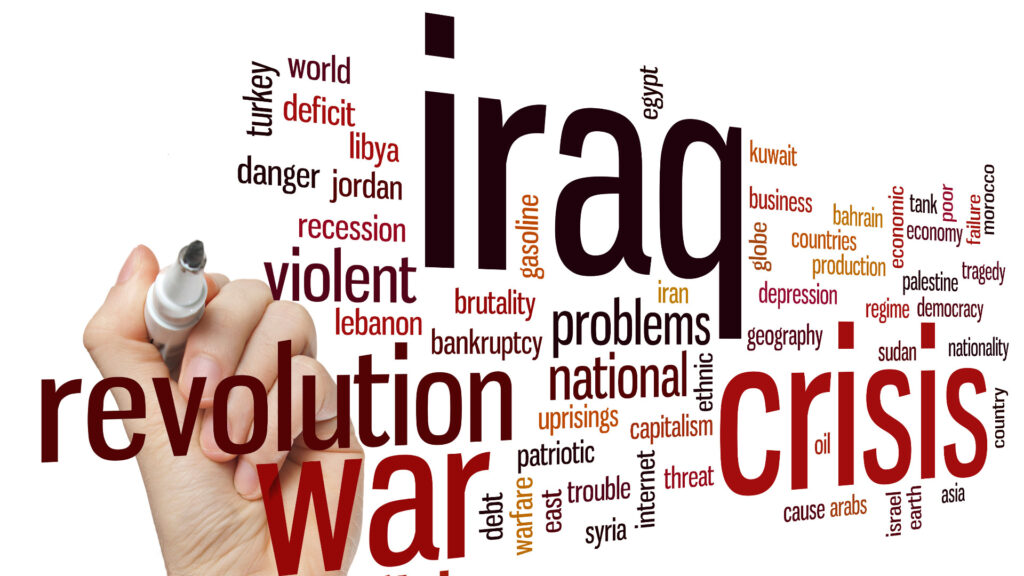
Insurgency and Civil War
Shortly after the coalition established control, various insurgent groups emerged to fight the occupation. This included secular Iraqi nationalists, loyalists to Saddam's regime, and Islamic extremists such as al-Qaeda. Insurgents engaged in guerrilla attacks, bombings, ambushes, and kidnappings targeting coalition troops, Iraqi security forces, and civilians. As the occupation dragged on, it sparked escalating attacks between Iraq's Sunni and Shia communities, pushing the country towards civil war.
The Withdrawal of US Troops
Facing increasing domestic pressure, the Bush administration began reducing troop levels in 2007 as conditions slowly improved. The US and Iraqi governments negotiated a withdrawal timeline in 2008. On December 18, 2011, the last US troops departed Iraq, nearly 9 years after the initial invasion. However, Iraq remained internally divided and vulnerable.
The Rise of ISIS and Continued Fighting
The power vacuum left by the US withdrawal allowed extremist groups like ISIS to gain strength and seize territory in Iraq and Syria. This prompted renewed military involvement by the US and allies to combat ISIS. Even after the group lost its territory by 2017, Iraq continued to face political instability and intermittent terrorist attacks.
The Scope and Impact of Operation Iraqi Freedom
Operation Iraqi Freedom stood apart for its vast scale and repercussions. The initial invading coalition included forces from over 40 countries, with the US providing the bulk of some 250,000 troops. Over 4,400 coalition troops died during OIF. Estimates of Iraqi casualties range from around 100,000 to over 600,000 killed during the span of the conflict.
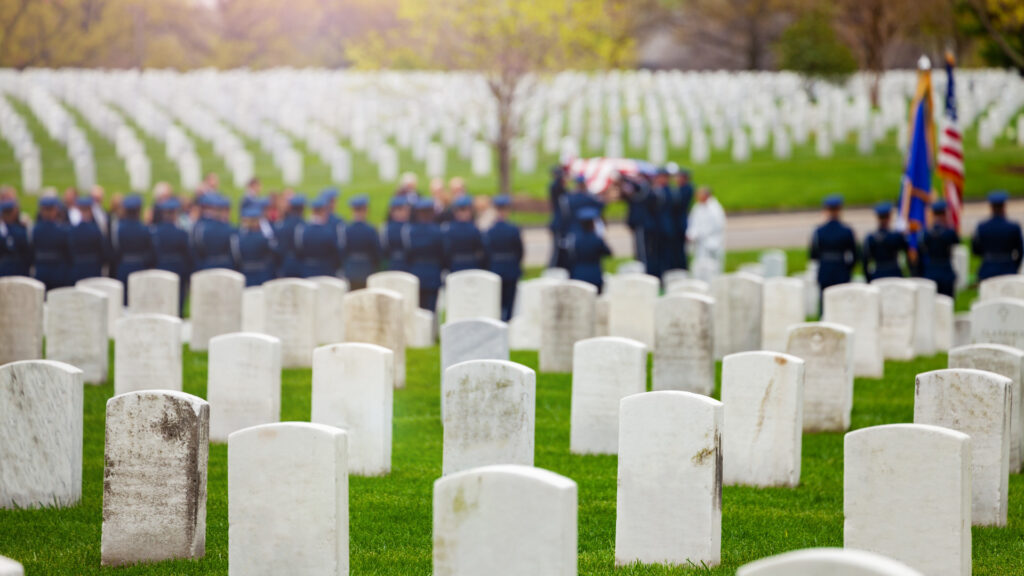
Coalition Participants
The US contributed around 75% of troops and nearly all aircraft, Artillery, and armor assets. Other notable coalition members included the UK, Australia, Poland, and Spain. Over 40 countries provided some level of direct military support, while many others expressed diplomatic backing. However, countries like France and Germany openly opposed the invasion.
Iraqi and Civilian Casualties
The Iraq war caused massive loss of life and injuries among Iraqi citizens and security forces across various periods of fighting, insurgency, and general disorder following the overthrow of Saddam Hussein. Total war-related deaths likely exceeded 100,000 and may have been higher than 600,000 according to some estimates. Both coalition forces and insurgent groups contributed extensively to civilian suffering.
Financial Costs
Financial costs of Operation Iraqi Freedom have been immense as well, exceeding $1 trillion for the US alone when factoring in long-term obligations like care for wounded veterans. Rebuilding Iraq's shattered infrastructure and institutions also required immense investment. The monetary burdens and global economic impacts made OIF one of the most financially costly military operations in modern history.
Operation Iraqi Freedom Map: The Conclusion
The Operation Iraqi Freedom Map encapsulates the intricate dynamics and pivotal events of this lengthy military campaign. It serves as a powerful visual aid for understanding the invasion's rapid initial success in toppling Saddam Hussein as well as the ensuing quagmire of insurgency and instability that developed.
Key areas of focus on the map reveal the major battles and clashes between coalition forces, insurgents, and sectarian militias that defined much of the post-invasion period. The overlapping zones of control illustrate the fragmented territorial disputes that undermined efforts at stabilizing Iraq. Regional differences and divisions contributed to rising tensions following the power vacuum after Saddam's regime fell.
In reviewing the hardships faced by occupying troops, the persistent insurgency they confronted, and the unraveling of early military gains, the map documents the human and political complexities of war. Its symbols and markings trace the shifting tides from initial optimism to the harsh realities of managing a volatile nation rebuilding after decades of authoritarian rule.
While showcasing the planning and execution of operations designed to decisively defeat Iraqi forces, the map also reveals the unintended consequences of invasion and regime change. Through its snapshot of key events spanning 2003 to 2011, it encapsulates both the short-term military dominance by technologically superior coalition forces as well as their long-term strategic challenges in occupying and remaking Iraq amid sectarian strife and insurgent attacks.
The story of Operation Iraqi Freedom is still evolving, but the map provides historical perspective and insight into a conflict that has broadly shaped the 21st century. Its symbols continue illuminating the triumphs and pitfalls of war.
Frequently Asked Questions
Q: When did Operation Iraqi Freedom start and end?
A: OIF commenced on March 20, 2003 with the coalition invasion of Iraq. It concluded on December 18, 2011 when the last remaining US troops withdrew from Iraq after nearly 9 years of conflict.
Q: What was the rationale for invading Iraq in 2003?
A: The Bush administration claimed Iraq had weapons of mass destruction and connections to terrorist groups, posing an unacceptable threat after 9/11. However, these claims remain controversial.
Q: How did UN Security Council Resolution 1441 relate to the Iraq War?
A: UN Security Council Resolution 1441, adopted in November 2002, was a pivotal document that demanded Iraq disarm and allow UN inspections for weapons of mass destruction (WMDs). Non-compliance would result in serious consequences, which paved the way for the 2003 invasion.
Q: What was the significance of May 2003 in the context of operations in Iraq?
A: In May 2003, President George W. Bush declared the end of major combat operations in Iraq aboard the USS Abraham Lincoln, marked by the "Mission Accomplished" speech. This declaration came after the fall of Baghdad and the initial phase of the war.
Q: How did the global war on terrorism influence the decision to invade Iraq?
A: The global war on terrorism, intensified after the September 11 attacks, influenced the decision to invade Iraq. The Bush administration argued that Iraq's weapons programs and alleged ties to terrorist groups like al-Qaeda posed a threat that needed to be addressed.

